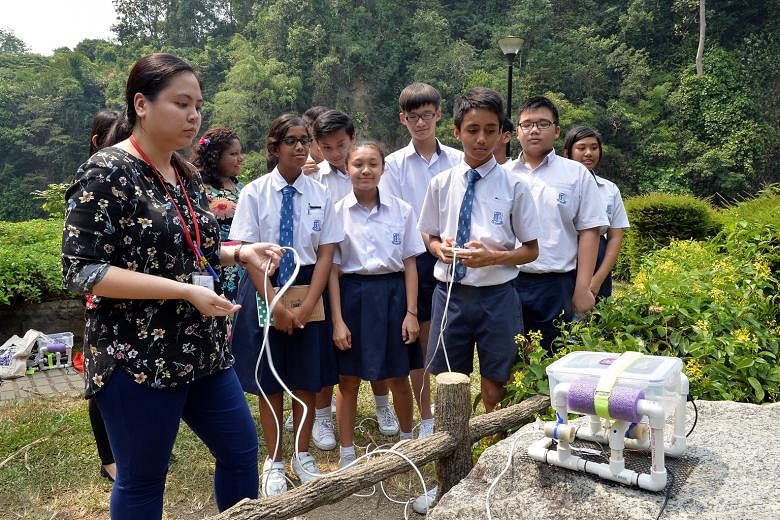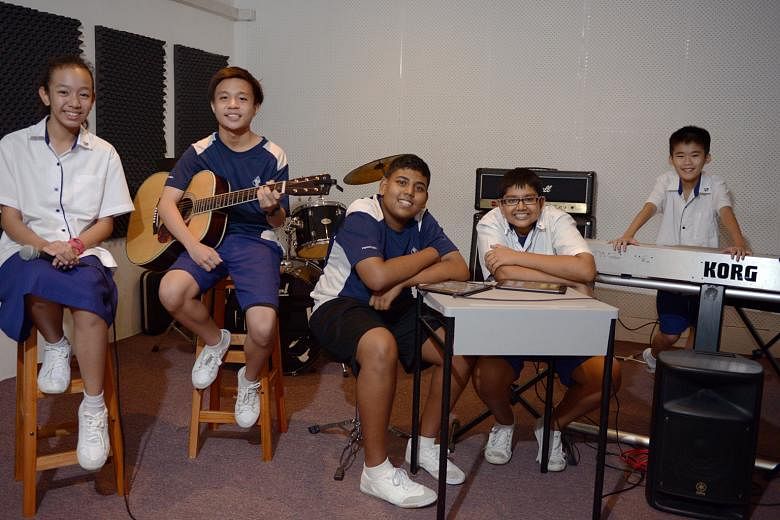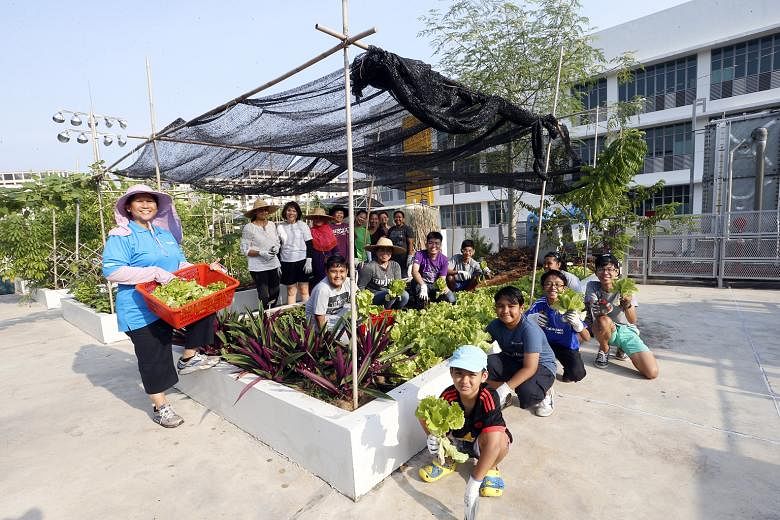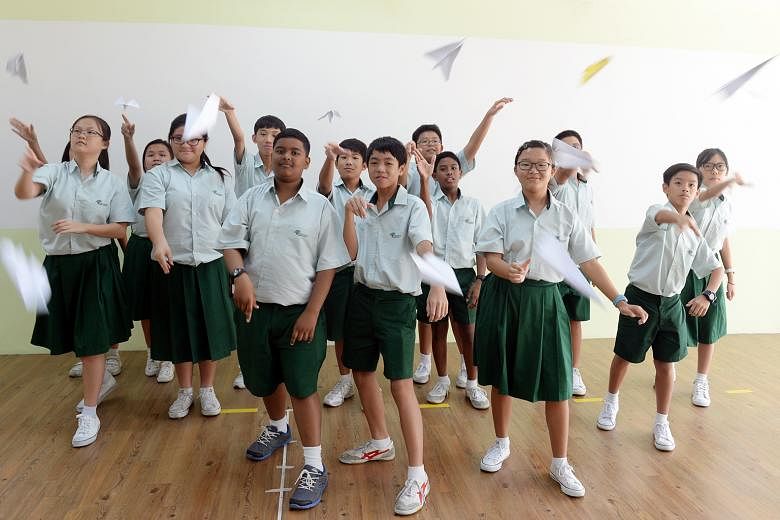Look beyond academic scores when choosing which secondary school to go to.
That was the call from Acting Education Minister (Schools) Ng Chee Meng earlier this month, as he promised that by the time the aggregate score is scrapped from the PSLE, pupils will have secondary schools offering a diverse range of niche programmes to pick from.
This will give students a chance to develop their interest, be it a particular sport or art form, or pick up something new.
But will parents bite?
Or will they still pick the best schools their children qualify for?
Nearly every one of the 120 mainstream secondary schools has one or more distinctive programmes - through the Applied Learning Programme (ALP) or the Learning for Life Programme (LLP).
The first helps students see the relevance of what they learn, for instance in science and technology, or in business and entrepreneurship. The other is to develop character and skills such as teamwork through school expeditions, sports or the arts.
Moving forward, the schools are expected to increase the quality of these programmes, and roll them out to all their students.
At Riverside Secondary School in Woodlands, the creative arts come alive.
All Riversidians, as the students are known, are taught different genres of dance, including traditional Chinese, Malay and Indian dance, during curriculum time.
Said the school's principal, Madam Shanti Devi: "Our students have talents and abilities, and there must be space and time in schools, and in life, to develop these areas."
At Jurong Secondary School (JSS), sports are given a special place.
Students are expected to pick up at least eight different sports, such as basketball and volleyball, by the time they graduate.
CHIJ St. Theresa's Convent's focus is on girls' hockey, a sport it has excelled in since the 1970s.
Students learn it during physical education lessons.
At Broadrick Secondary School, the focus is on service learning, where students find ways to help the elderly and the special needs community, such as those with disabilities and Down syndrome.
Water sports such as kayaking and dragon boat racing are the highlight at Damai Secondary School, while Admiralty Secondary School's niche is robotics.
The Education Ministry provides funding of $50,000 a year for each distinctive programme offered by a school.
This works out to about $12 million for all schools annually.
JSS principal Ruby Khoo said the programmes aim to persuade parents to think beyond grades when choosing a secondary school.
"If a child is passionate about the environment and conservation, for example, then parents should look out for schools that focus on that," she said.
"The child would then have an opportunity to grow that passion and, over time, may find it is an area to pursue in life."
But it remains to be seen if parents will be convinced.
National University of Singapore Associate Professor Paulin Straughan said: "If the intent is to draw top kids back into the neighbourhood schools, I'm not sure if it will happen."
She believes schools need to concretely show how their distinctive programmes will help students down the road.
She added: "Parents are willing to try specialised schools like NUS High School of Mathematics and Science and School of the Arts Singapore because they see a route to university."
Jalan Besar GRC MP Denise Phua, who heads the Government Parliamentary Committee for Education, said the effort to build up distinctive strengths among schools is laudable, but worries if they end up competing with one another to be noticed for their programmes.
Besides, as Madam Dana Loh, 37, who is in the marketing line and has two children aged three and seven, said: "How many children know what interests them when they are just 12?"
Some argue that the academically inclined schools also develop children holistically.
Said flight attendant Shirley Ng, 44, who has a daughter in Primary 1 and a son in Primary 4: "If you can get into a good school, they will likely also have the resources to cultivate students' interests."
While Mr Ng encouraged students to choose schools which best suit their aptitude and aspirations, he stressed the key was "to give them time and space to explore different domains and learn new things", and to enjoy the learning journey.




